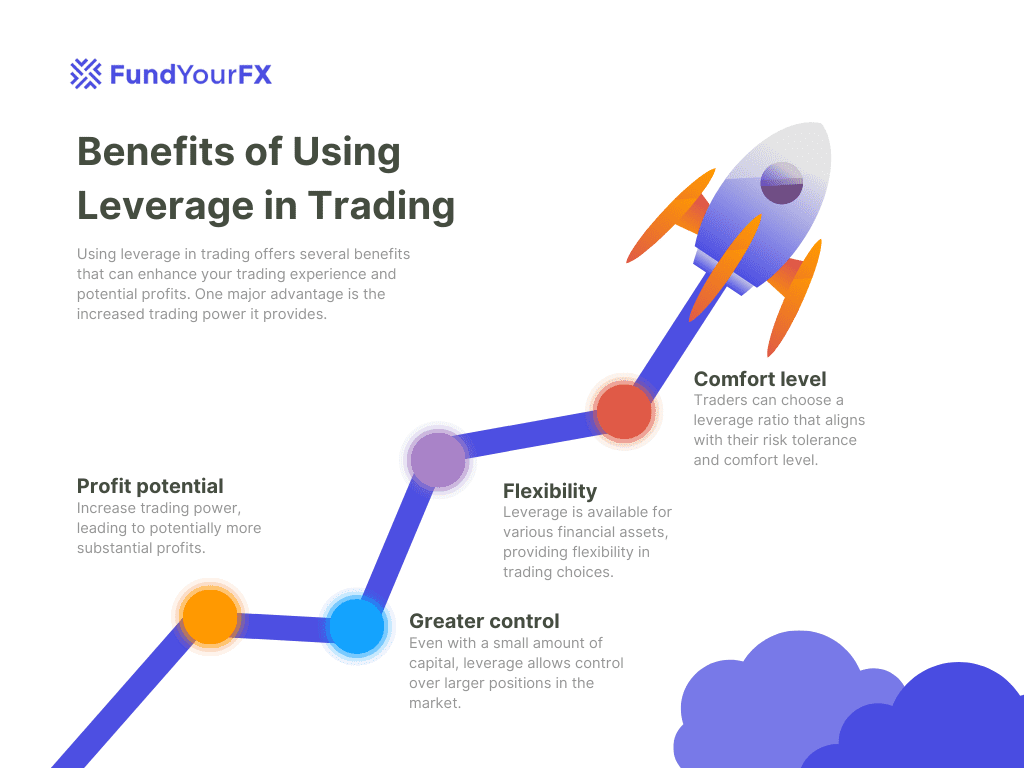Introduction
In the world of trading, leverage is a powerful tool that can help you to increase your profits on investments. By borrowing funds from a broker, you can control more significant positions in the market with a relatively small amount of capital. However, using leverage in trading can also magnify losses, making it essential to use it wisely and with effective risk management.
This article explores the concept of trading leverage, its benefits and risks, and how to use it effectively. It also provides a real-world example of leverage trading to illustrate its potential outcomes. Whether you are a seasoned trader or new to the trading world, this article will provide essential insights into using leverage.
What is Trading Leverage?
Leverage in trading refers to using borrowed funds to increase the potential returns on investment. Using leverage in trading allows you to control more significant positions in the market, even with relatively small capital.
However, please understand that trading leverage can only multiply profits because it can cause you to experience losses quickly. That is why you must use leverage wisely and have adequate risk management.
Leverage is commonly used in forex trading, as currency price movements are relatively small. But currently, leverage trading is limited to forex and stocks, cryptocurrencies, commodities, and futures.
Leverage Trading Example
Let’s say you have $10,000 in your trading account and want to invest in a stock you believe will increase in price. You could buy 100 shares at $100 per share, which would tie up your capital.
Instead, you decide to use leverage and open a margin account with a broker that offers leverage of 1:10. This means that for every $1 you put up, you can control $10 worth of the stock.
With your $10,000, you could now control a position worth $100,000 in the stock market. You put up $10,000 as a margin and borrow the remaining $90,000 from the broker. This allows you to buy 1,000 shares at $100 per share.
A few days later, the stock price increases to $110 per share, and you decide to sell your position. Your total profit is $10,000 ($110 per share – $100 per share x 1,000 shares). This represents a 100% return on your initial investment of $10,000.
However, if the stock price had decreased to $90 per share, your total loss would have been $10,000 ($100 per share – $90 per share x 1,000 shares). This would have wiped out your entire trading account, and you would have had to repay the $90,000 borrowed from the broker.
From the case above, leverage trading can also result in substantial losses besides providing opportunities for significant profits. That is why it is essential to always have good risk management before engaging in leverage trading.
Benefits of Using Trading Leverage

Despite all the risks involved, using leverage in trading can be profitable if used wisely. Leverage can increase your trading power because you can control more significant positions in the market even with a small amount of capital, leading to potentially more substantial profits.
Leverage in trading is also very flexible as it is available for various financial assets that can be traded. You are free to choose the leverage ratio that suits your comfort level.
When it comes to leverage trading, you don’t have to worry about trading costs because, with leverage, you only need to put up a fraction of the total position value as a margin.
Risks of Using Leverage in Trading
In addition to its benefits, using leverage in trading also comes with various risks that you need to face. These include magnified losses, as the more extensive the leverage ratio you use, the faster and more significant your losses can be.
If you use leverage in trading, you must maintain a certain margin level in your account to keep your positions open. If the market moves against your plan and your margin falls below the required level, you may receive a margin call from your broker, requiring you to deposit more funds or close your positions before your capital is entirely wiped out.
Leverage in trading can also trigger overtrading, so you need to learn to control your emotions to avoid fear, greed, and impulsive decision-making.
How to Use Trading Leverage?
To use leverage in trading, you must first open a margin account with a brokerage firm that offers this service. A margin account allows you to borrow funds from the broker to trade with, using your existing investments as collateral.
Once you have a margin account, you can use leverage to increase the size of your trades. The leverage you can use depends on the broker and the type of asset you are trading.
One strategy that is quite effective to be applied in leverage trading is to use stop-loss orders to limit your losses. A stop-loss order is a type of order that automatically closes out your position if the price of the asset falls below a certain level. This can help limit your potential losses if the trade goes against you.
Using trading leverage can be a powerful tool for maximizing profits, but using it responsibly and with a solid understanding of the risks involved is essential. A well-thought-out trading plan and risk management strategy are vital to helping minimize potential losses.
In Conclusion
Trading leverage can effectively increase your trading power and generate higher investment returns. However, it comes with significant risks that must be managed to avoid magnified losses. By understanding the benefits and risks of using leverage in trading and implementing good risk management strategies, you can use this tool to your advantage.
Remember that leverage in trading should be approached with caution, and it is essential to have a well-thought-out trading plan and risk management strategy in place. With the right approach, you can leverage your investments effectively and take advantage of opportunities in the market while minimizing potential losses.







